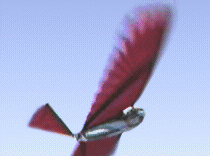Biomimetics
Biomimetics or biomimicry is the design and production of materials, structures, and systems that are modeled on biological entities and processes. The term biomimetics is derived from the Greek words bios, meaning life, and mimesis, meaning to imitate. This interdisciplinary field spans biology, chemistry, physics, engineering, and materials science among others, aiming to solve human problems through the imitation of the models, systems, and elements of nature.
History[edit | edit source]
The concept of biomimetics has ancient roots, with historical examples including the study of birds to enable human flight. However, the formal study of biomimetics is often attributed to the American biophysicist and polymath Otto Schmitt, who coined the term biomimetics in the 1950s. Since then, the field has grown significantly, with advancements in technology enabling more complex and effective biomimetic applications.
Principles[edit | edit source]
Biomimetics involves three core principles: identification of a problem, looking to nature for a solution, and the application of natural principles to solve the problem. This process often requires interdisciplinary collaboration to understand the biological processes at play and to translate these into practical applications.
Applications[edit | edit source]
Biomimetics has led to the development of a wide range of technologies inspired by nature. Some notable examples include:
- Velcro, inspired by the way burrs attach to animal fur.
- The design of efficient aircraft wings based on the aerodynamic properties of bird wings.
- Self-cleaning surfaces, such as those inspired by the lotus leaf.
- Structural coloration techniques inspired by the way certain animals and plants produce color through microstructures rather than pigments.
- Biomimetic robots that mimic the movements and behaviors of animals, improving their ability to interact with natural environments.
Challenges and Future Directions[edit | edit source]
One of the main challenges in biomimetics is the complexity of biological systems, which can be difficult to understand and replicate. Additionally, there is the challenge of scalability and cost-effectiveness in producing biomimetic solutions. Despite these challenges, the field of biomimetics continues to grow, with ongoing research focusing on sustainable solutions to global challenges such as energy, water scarcity, and environmental degradation.
See Also[edit | edit source]
Search WikiMD
Ad.Tired of being Overweight? Try W8MD's physician weight loss program.
Semaglutide (Ozempic / Wegovy and Tirzepatide (Mounjaro / Zepbound) available.
Advertise on WikiMD
|
WikiMD's Wellness Encyclopedia |
| Let Food Be Thy Medicine Medicine Thy Food - Hippocrates |
Translate this page: - East Asian
中文,
日本,
한국어,
South Asian
हिन्दी,
தமிழ்,
తెలుగు,
Urdu,
ಕನ್ನಡ,
Southeast Asian
Indonesian,
Vietnamese,
Thai,
မြန်မာဘာသာ,
বাংলা
European
español,
Deutsch,
français,
Greek,
português do Brasil,
polski,
română,
русский,
Nederlands,
norsk,
svenska,
suomi,
Italian
Middle Eastern & African
عربى,
Turkish,
Persian,
Hebrew,
Afrikaans,
isiZulu,
Kiswahili,
Other
Bulgarian,
Hungarian,
Czech,
Swedish,
മലയാളം,
मराठी,
ਪੰਜਾਬੀ,
ગુજરાતી,
Portuguese,
Ukrainian
Medical Disclaimer: WikiMD is not a substitute for professional medical advice. The information on WikiMD is provided as an information resource only, may be incorrect, outdated or misleading, and is not to be used or relied on for any diagnostic or treatment purposes. Please consult your health care provider before making any healthcare decisions or for guidance about a specific medical condition. WikiMD expressly disclaims responsibility, and shall have no liability, for any damages, loss, injury, or liability whatsoever suffered as a result of your reliance on the information contained in this site. By visiting this site you agree to the foregoing terms and conditions, which may from time to time be changed or supplemented by WikiMD. If you do not agree to the foregoing terms and conditions, you should not enter or use this site. See full disclaimer.
Credits:Most images are courtesy of Wikimedia commons, and templates, categories Wikipedia, licensed under CC BY SA or similar.
Contributors: Prab R. Tumpati, MD





